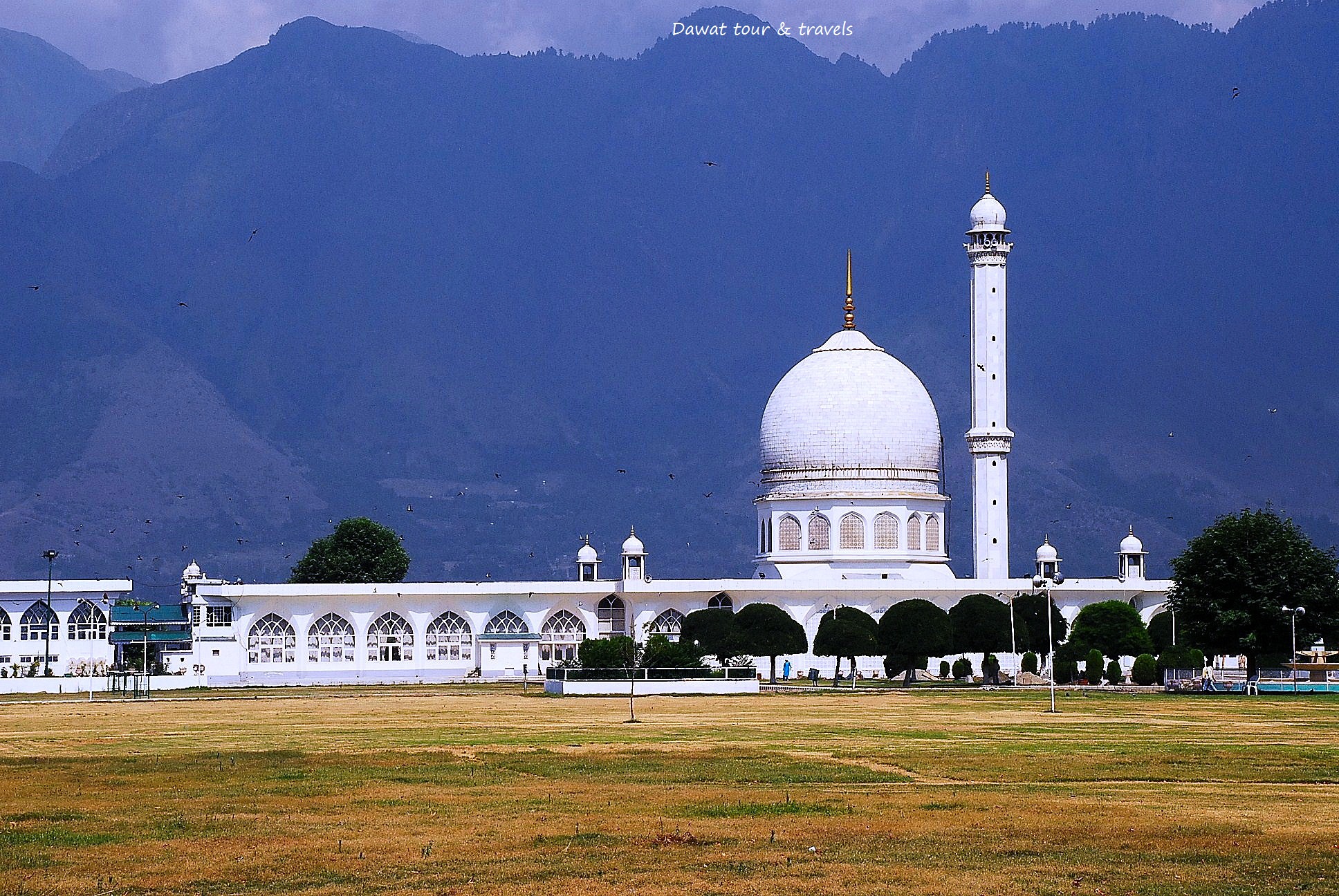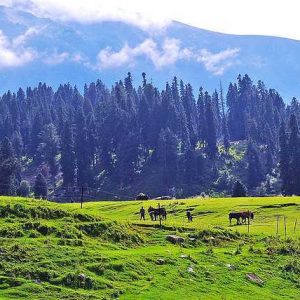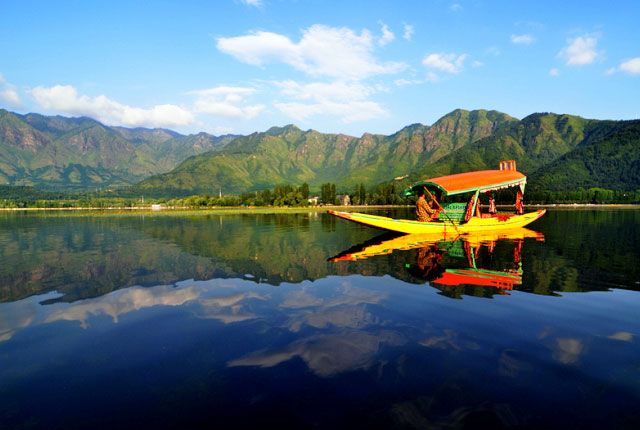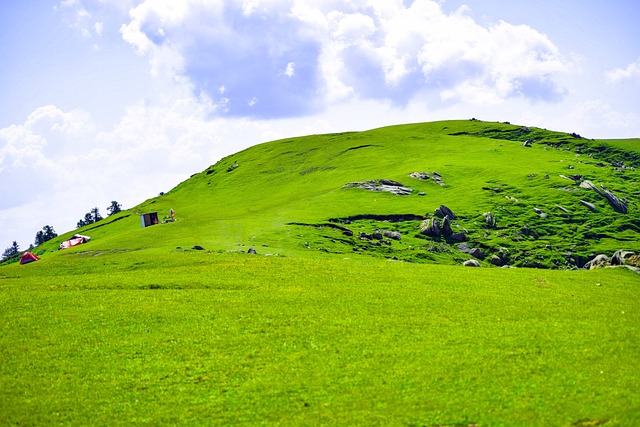
Famous Tourist Places in Kashmir
Table of Contents
ToggleOverview
Surrounded by the resplendent Himalayas, Kashmir unfurls like a living postcard—rolling green hills swathed in snow-white mountains, glittering streams lined with floating gardens, and centuries-old houseboats that whisper stories of living romance. One of South Asia’s most desired destinations, Kashmir tourism remains to entice vagabonds in search of unspoiled nature, spine-chilling adventure, and living cultural fabric. Whether you are visiting Kashmir for the first time or going back again to unveil its secrets, this ultimate Kashmir travel guide will help you discover the most popular places to visit in Kashmir and share insider tips to ensure your hassle-free, unforgettable holiday.





Why Kashmir Should Be at the Top of Your Travel Plans
There is no wonder that Kashmir tourism needs to offer stunning views and a mystical feeling of tranquility around every corner.
From strolling through scented Mughal gardens in Srinagar to skiing down snow white slopes at Gulmarg, the valley invites with a variety of Kashmir tourist attractions for couples, families, and solo travelers. Pleasing historic heritage melts into gracious hospitality here: sip Kashmiri kahwa with locals, hike on windings paths in Pahalgam, or simply float on Dal Lake’s serene waters. With its mix of nature’s beauty and cultural appeal, Kashmir provides a overall travel experience that will stay with you long after you’ve left.
Best Time to Visit Kashmir for All Categories of Travelers
Timing is everything when planning a visit to Kashmir. The region drastically alters with the seasons, offering something new each time of year:
- Spring (March-May): Climatic temperatures welcome green meadows into bloom. This is likely the best time to be in Kashmir if you are an admirer of many-colored landscapes with tulips and cherry blossoms. Festivals such as the Tulip Festival in Srinagar help add to the romance that fills the air.
- Summer (June-August): Warm days and pleasant nights are a welcome to tourists and trekkers alike. Beat the heat by sailing on Dal Lake’s shikaras, visit the gushing waterfalls of Pahalgam, or trek along the fairy-tale grasslands of Sonamarg.
- Autumn (September to November): Typically described as the best time to visit Kashmir, autumn shows off a kaleidoscope of amber, crimson, and golden leaves against pine woods. Nature enthusiasts and photo enthusiasts will be able to shoot infinite vistas.
- Winter (December to February): Snow covers the ground, and Gulmarg becomes a winter sports haven. Skiing, snowboarding, and snowshoeing are things you should not miss in Kashmir in winter, and warm houseboats in Srinagar provide refuge from the chill.
Every season colors Kashmir in a different way, so shape your travel persona—adventure-packed or easygoing discovery—to the time of your visit.
Keys to Focusing on Kashmir's Must-Visit Spots
Srinagar: The Heart of Kashmir
Houseboats and Dal Lake Floating Gardens
No trip to Kashmir is ever complete without the classic shot of shikaras navigating emerald waters of Dal Lake, with floating vegetable gardens and majestic houseboats by their side. Start your day at dawn to see the reflection with water-lilies shining. Take a leisurely boat ride on a shikara to enjoy unobstructed views of the Pir Panjal range and visit the floating markets with fresh fruits, vegetables, pashmina shawls, and local handicrafts.
Mughal Heritage at Chashme Shahi and Shalimar Bagh
Time travel back to the golden days of Kashmir holiday resorts through the stepped Mughal gardens. Chashme Shahi, with its royal spring and intricately manicured lawns, and Shalimar Bagh, former sanctuary of King Jahangir, both symbolize peace. Architecture enthusiasts interested in historic beauty will need to observe the stunning Persian-style frontage, tumbling fountains, and ornate pavilions that act as markers to an era gone by.
Best Activities in Srinagar
- Discover the Old City: Stroll past walled lanes surrounding the Jama Masjid, shop in crowded bazaars, and taste street food such as kebabs and Kashmiri noon chai.
- Paragliding over Srinagar: For a bird’s eye perspective of the city, tandem paragliding presents stunning views over the city and peaceful lakes.
- Shankaracharya Temple: Perched atop Srinagar, this ancient Hindu shrine provides scenic vistas and a glimpse of the spiritual heritage of the region.
Gulmarg: Meadow of Flowers and Winter Paradises
Skiing and Snowboarding Festival
Gulmarg’s top-notch ski resorts attract ski enthusiasts from all over the world. Picked as the “Winter Sports Capital of India,” Gulmarg has one of the world’s highest ski resorts. An experienced skier after fresh powder or a beginner after the first lesson, Gulmarg’s snow-covered slopes will keep your adventurous heart enthrallled.
The Gulmarg Gondola: Cloud Nine beckons
One of Kashmir’s biggest tourist attractions, the Gulmarg Gondola is one of Asia’s highest cable cars. This two-stage cable car transports tourists from Gulmarg Gondola Station to Kongdoori and the summit of Mount Apharwat at an altitude of more than 4,000 meters. Stop halfway to take in breathtaking views of white-topped mountains, frozen streams, and alpine boulder terrain.
Summer Splendor: Golfing Greens and Wildflower Trails
As winter melts away, Gulmarg becomes an alpine meadow quilt of wildflowers. Ramble along scenic paths from Alpather Lake or test your swing at the Gulmarg Golf Course—one of the world’s highest 18-hole golf courses. The crisp air and emerald-green fairways promise a day of enjoyment.
Pahalgam: Valley of the Shepherds and Riverfront Retreat
The Lush Landscapes of Betaab Valley
A short drive from Pahalgam town, Betaab Valley greets visitors with green meadows dotted with pine woods and beautiful waterfalls. The valley has been so named because of the filming of the 1980s Bollywood movie “Betaab” here. It is a filmy background for nature lovers and shutterbugs.
Adventure Activities: River Rafting and Trekking
For the adventure-seeker, white-water rafting down the Lidder River is one of the area’s most popular activities. Paddle Class II and III rapids past foreboding deodars and bubbling side streams. The adrenaline junkie can also opt for multi-day hikes to the Aru Valley or the strenuous Kolahoi Glacier trek.
Cultural Immersion: Local Kashmiri Life
Pahalgam’s laid-back village culture invites everyone to become a part of everyday Kashmiri life. Observe shepherds and their herds, sample locally made walnut oil and saffron items, or join a community cooking class to learn the skills of making Rogan Josh.
Sonamarg: Entrance to Himalayan Treks
The Golden Meadow and Beyond
Literally translated as “Meadow of Gold,” Sonamarg is famous for its unpolluted lakes, rugged mountain peaks, and glacial streams. Surrounded by gigantic glaciers, it serves as a flawless base camp for trekking high-altitude routes that lead to Thajiwas Glacier, Vishansar Lake, and Gangabal Lake.
Horseback Expeditions to Thajiwas Glacier
One of the most favorite family outings, horse treks trudge through the emerald green meadows abounding in wildflowers to the shining ice of Thajiwas Glacier. The idyllic view of woolly ponies trudging across the snow will be a memory to hold on to.
Beyond Day Trips: Multi-Day Himalayan Adventures
Braver travelers can take longer treks from Sonamarg, including the tough trek to Naranag Temple or a three-day trek to twin lakes Vishansar and Krishansar. These off-beat circuits unveil unspoiled wilds, where one sees Himalayan wildlife like brown bears and snow leopards.
Off-the-Beaten-Path Gems: Yousmarg, Doodhpathri, and Lolab Valley
Yousmarg: The Mini-Switzerland of Kashmir
Surrounded by a glacial lake and loaded with pine meadows, the tranquil beauty of Yousmarg earned it the distinction of being called “Mini-Switzerland.” Great for picnics, pony rides, and bird watching, Yousmarg remains off the tourist map of the common tourist, so it’s ideal for a soul seeking tranquility.
Doodhpathri: The Valley of Milk
Doodhpathri got its name from milky white spring water and captivates tourists with rolling grassland, gurgling brooks, and daisies. A group of shepherd tents beckons one for overnight camping under open skies, thereby facilitating stargazing unhampered by city lights.
Lolab Valley: Secluded Alpine Paradise
Surrounded by the Kupwara district, the Lolab Valley is ringed by walnut and oak forests which come alive with autumn color. Alongside are the tranquil waters of Wular Lake, and thus Lolab is perfect for kayaking and birdwatching, particularly migratory birds that winter along the lake shores.
Experiences That Define Kashmir Tourism: More Than Sightseeing
Real Kashmiri Cuisine to Savor
No Kashmir visit would be done without a taste of the state’s rich gastronomic heritage. From the fiery glow of Rogan Josh—lamb in red chili and yogurt sauce with billowing spices—to the restraint of Yakhni—meat cooked in saffron-perfumed stock—each dish hints at Mughal custom and native spices. Gushtaba meatballs in yogurt gravy, Kahwa green tea perfumed with saffron and almonds, and Phirni, rice pudding with whiffing cardamom, cannot be resisted.
Immerse yourself in Kashmiri Crafts
Walk through bustling bazaars in Srinagar and Pahalgam to witness beautiful Pashmina shawls, intricate Kashmiri carpets, and masterfully carved walnut wood craft. Centuries-old techniques passed down from generation to generation are followed by most craftsmen. Shopping from craftsmen directly not only adds richness to your travel experience but also promotes tourism and colorful cottage industries.
Spiritual Sojourn: Temples, Mosques, and Monasteries
The cultural variety of Kashmir is also evident in its places of worship. Go visit the peaceful Shankaracharya Temple on Zabarwan Hills, the holy Hazratbal Shrine on Dal Lake, and the historic Shankaracharya Buddhist Monastery. All three sites provide an insight into Kashmir’s religious composition, where Hindu, Muslim, and Buddhist faiths existed in harmony for centuries.
Accommodation and Getting Around
Where to Stay: From Luxury Houseboats to Mountain Camps
- Srinagar Houseboats: Life as it was, in carefully crafted wooden houseboats on Dal Lake. Many have private gardens, multi-cuisine restaurants, and stargazing decks with views of the horizon.
- Gulmarg Luxury Resorts: Spas, gourmet dining, and ski-in/ski-out, luxurious resorts provide a luxury treat to those seeking indulgence combined with some adventure.
- Eco-Camps at Sonamarg and Pahalgam: River-bed cottages and rough tents let you sleep under the soothing lapping of Lidder and Sind streamlets.
- Homestays and Guesthouses: When on a tight budget, home-baked food and hospitality await at villagers’ homestays at Aru and Doodhpathri.
Travelling in Kashmir: Road, Rail, and Air
Kashmir’s serpentine roads provide some of India’s finest drives.
Although it is possible for veteran drivers to self-drive, it is better to engage a local driver skilled at driving in the hills for convenience and security.
Srinagar International Airport links big cities such as Delhi and Mumbai. Although the Kashmir Railway project is not yet finished, there is an envisaged extension that will link Srinagar with the national rail network, opening new skies in the foreseeable future.
Vitality Tips and Precautions for Safety
- Acclimatize Gradually: Thin air at high altitudes in locations such as Gulmarg and Sonamarg may cause a mild altitude sickness. Drink plenty of water, avoid physical exertions during the first day, and have necessary medicines with you.
- Respect Local Culture: Kashmiris are famous for their warm welcome and respect for their culture. Dress modestly, ask permission before taking pictures of locals, and take shoes off when visiting places of worship.
- Weather-Ready Packing: Summer evenings are cool; pack layers, waterproofs, and good walking boots for rough ground. Winter requires base layers for warmth, snow boots, and insulated parkas.
- Cash is King: Smaller hotels and restaurants may not take cards, so carry plenty of Indian rupees, particularly in the far-flung valleys.
- Stay Informed about Travel Alerts: Listen to local broadcasts and official updates for weather forecast, landslide warning, or time-wise road closure. Keeping the itinerary flexible allows one to incorporate the changes easily.
Building Your Ideal Kashmir Itinerary
There are simply too many places to visit and experience around Kashmir that the efficient but engaging itinerary is the way to go. Here’s a suggested 10-day itinerary with the right balance of nature, culture, and adventure:
Day | Destination | Highlights |
1 | Srinagar | Houseboat stay, shikara ride on Dal Lake |
2 | Srinagar | Mughal gardens, Old City bazaar, Shankaracharya |
3 | Gulmarg | Gondola ride (Phase I), explore Kongdoori |
4 | Gulmarg | Skiing/snowboarding or summer meadow hikes |
5 | Pahalgam | Betaab Valley, sunset by the Lidder River |
6 | Pahalgam | River rafting, Aru Valley trek |
7 | Sonamarg | Thajiwas Glacier horseback ride |
8 | Sonamarg | Multi-day trek to Vishansar Lake (begin) |
9 | Yousmarg → Doodhpathri | Scenic drive, picnics in meadows |
10 | Srinagar | Relaxation, shopping for Pashmina and handicrafts |
Adjust this itinerary to your liking—either by lingering longer in one valley or adding a spiritual retreat at a remote monastery.
Conclusion: Weaving Memories Amid Himalayan Splendor
From the soothing serenade of the shikara oars on Dal Lake to the adrenalin rush on Gulmarg slopes, tourism in Kashmir is an experience that cheers and calms.
Kashmir’s top tourist places sparkle most when viewed with an open heart, reverence for local culture, and affection for pure adventure. As you move in this “Paradise on Earth,” make every valley, mountain peak, and saffron-tasted cup of kahwa a page in your personal travel book. If you desire romance, tranquility, or adventure, Kashmir’s stunning landscapes and friendly folks wait to wrap you in their timeless arms.
How to book Kashmir tour?
Contact a travel agency that specializes in Kashmir tours. You can reach out to the following for assistance:
- Phone:
- +91 7889 655596
- +91 7006 891267
- Email:
Inquire about tour packages, itineraries, and pricing, and confirm your booking for a memorable winter experience!
People Also Ask
What are the top tourist attractions in Kashmir?
The top attractions include Dal Lake and Mughal gardens in Srinagar, Gulmarg’s Gondola and ski slopes, Pahalgam’s Betaab Valley, Sonamarg’s Thajiwas Glacier, and the offbeat charms of Yousmarg, Doodhpathri, and Lolab Valley.
When is the best time to visit Kashmir?
The ideal time to visit Kashmir is from March to November—spring for tulip blooms, summer for shikara rides on Dal Lake, autumn for vivid foliage, and winter (December–February) for skiing in Gulmarg.
How do I get to Kashmir by air?
Fly into Srinagar International Airport (SXR), which offers regular flights from Delhi, Mumbai, Bengaluru, and other major Indian cities, followed by a short taxi or shuttle ride into the city or onward to Gulmarg and Pahalgam.
Is Kashmir safe for tourists?
Yes—mainstream Kashmir destinations are safe for travelers. Follow local advice, register with your hotel, respect customs, and check updated travel advisories before departure.
What is the average cost of a Kashmir tour package?
A 7–10 day mid-range Kashmir tour package typically ranges from INR 40,000 to INR 70,000 per person, including accommodation, transport, and guided sightseeing.
Do I need a permit to visit Kashmir?
Indian nationals need no special permits for most areas; foreign nationals require an Inner Line Permit (ILP) or Protected Area Permit (PAP) for restricted border zones—consult your travel agent or local authorities in Srinagar.
What are the must-try Kashmiri dishes?
Sample Rogan Josh, Yakhni, Gushtaba, Dum Aloo, and the iconic saffron-infused Kashmiri Kahwa green tea for an authentic culinary experience.
Can I book a houseboat stay on Dal Lake in advance?
Yes—reserve a traditional wooden houseboat online or through a local travel agency at least 2–3 months ahead, especially during peak season (April–October).
What clothes should I pack for a Kashmir trip?
Pack layered clothing: light woolens or jackets for spring/autumn, waterproof gear for summer showers, and heavy thermal wear, gloves, and snow boots for winter in Gulmarg and Sonamarg.
How many days are enough for a Kashmir trip?
A well-rounded 7–10 day itinerary lets you explore Srinagar, Gulmarg, Pahalgam, and Sonamarg comfortably, with time for day-treks and cultural experiences.
Are there adventure activities in Kashmir?
Absolutely—enjoy skiing and snowboarding in Gulmarg, white-water rafting on the Lidder River in Pahalgam, trekking to Vishansar Lake from Sonamarg, and paragliding over Srinagar.
What is the cost of the Gulmarg Gondola ride?
Gondola Phase I (up to Kongdoori) costs around INR 1,000 per person, and Phase II (to Mount Apharwat) costs around INR 1,500 per person; prices vary slightly by season.
Can I self-drive in Kashmir?
Self-driving is possible but challenging due to mountain roads—many travelers prefer hiring a local driver or using organized taxi services for safety and convenience.
What wildlife can I see in Kashmir?
Spot Himalayan brown bears, Kashmir stag (Hangul), musk deer, black bears, and a variety of migratory birds at Wular Lake and Dachigam National Park.
Is Wi-Fi and mobile connectivity available in Kashmir?
Major towns like Srinagar, Gulmarg, and Pahalgam have reliable 4G networks and Wi-Fi in hotels; remote valleys like Lolab and Doodhpathri may have intermittent coverage.
Where can I buy authentic Pashmina shawls?
Purchase directly from certified artisans in Srinagar’s Lal Chowk and Old City markets or through government-certified emporiums to ensure authenticity and fair pricing.
Are guided tours recommended in Kashmir?
Yes—guided tours offer local insights, hassle-free transport, and safety, especially for trekking, cultural excursions, and winter sports in remote areas.
What festivals can I attend in Kashmir?
Experience the Tulip Festival in April, Shikara Festival in May, and various local melas celebrating harvests, saffron blooms, and cultural heritage throughout the year.
Can families travel to Kashmir with children?
Absolutely—Kashmir offers family-friendly activities like boat rides on Dal Lake, pony rides to Thajiwas Glacier, gentle treks in Pahalgam, and picnic spots in Doodhpathri.
How do I reach Pahalgam from Srinagar?
Pahalgam is a 2- to 3-hour drive (approx. 90 km) from Srinagar via NH1D; shared taxis, private cars, and government buses run frequently.
What is the currency used in Kashmir?
Indian Rupees (INR) are used. ATMs are available in Srinagar and Gulmarg, but carry cash for smaller shops and remote villages.
Are there homestays in Kashmir?
Yes—villages like Aru, Doodhpathri, and Sonamarg offer cozy homestays run by local families, providing an immersive cultural experience and home-cooked meals.
Do I need travel insurance for Kashmir?
Strongly recommended—ensure coverage for medical emergencies, evacuation, trip cancellations, and adventure sports like skiing and rafting.
What altitude sickness precautions should I take?
Acclimatize gradually, stay hydrated, avoid alcohol, and carry altitude sickness medication if heading above 3,000 meters (e.g., Gulmarg Phase II).
How can I support sustainable tourism in Kashmir?
Choose eco-friendly lodges, buy directly from local artisans, minimize plastic use, respect wildlife and natural habitats, and engage with community-led tours to ensure your travel benefits the local economy.




